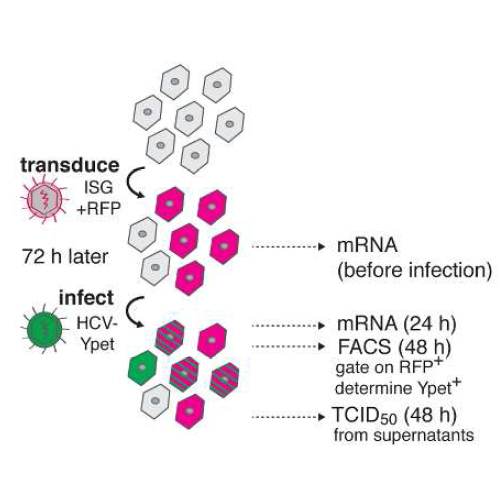Polymorphisms in melanoma differentiation-associated gene 5 link protein function to clearance of hepatitis C virus
05-Jan-2015
Among patients newly infected with hepatitis C virus (HCV), only 20-30% clear the infection spontaneously. In the remaining 70% the infection persists, causing chronic liver inflammation and disease. It is well established that polymorphisms in host genes, especially in components of the innate immune response, contribute to the phenomenon of spontaneous HCV clearance. Retinoic acid inducible gene-I (RIG-I)-like helicases such as melanoma differentiation-associated gene 5 (MDA-5) are cytoplasmic sensors of viral RNA that are critical for triggering innate immune responses after infection with RNA viruses. We analyzed 14 nonsynonymous single-nucleotide polymorphisms in RIG-I-like helicase-pathway-genes comparing European patients who spontaneously cleared HCV (n = 285) or had persistent infection (n = 509). We found that polymorphic haplotypes in the MDA-5 gene IFIH1 encoding histidine at position 843 and threonine at position 946 strongly correlate with the resolution of HCV infection (odds ratio [OR]: 16.23; 95% confidence interval [CI]: 3.67-71.87; P = 1.1 × 10−6). Overexpression of MDA-5 genetic variants in HEK 293 cells and in a tissue culture model of HCV infection revealed that the histidine 843/threonine 946 variant leads to increased baseline and ligand-induced expression of interferon-induced genes and confers an increased ability to suppress HCV replication. Conclusion: These data suggest that MDA-5 plays a significant role in the defense against HCV and that polymorphisms in MDA-5 can influence the outcome of HCV infection.











